SLC21/WK2: Introduction to Basic Electrical Circuits & Cable Joint
6 comments
In my first year in Engineering, the electric and electronics department really dealt on currents, which we took on several practicals. I could say it was fun getting to conduct practicals on the theories we have been learning. Most electrical devices if not all has an electric circuit, this circuit makes the device function.
Our lecturers gave a quick definition of a circuit which made it easier for us. A circuit is a path through which charges or energy flows. From our homework tasks I would love to get to the electric current proper.
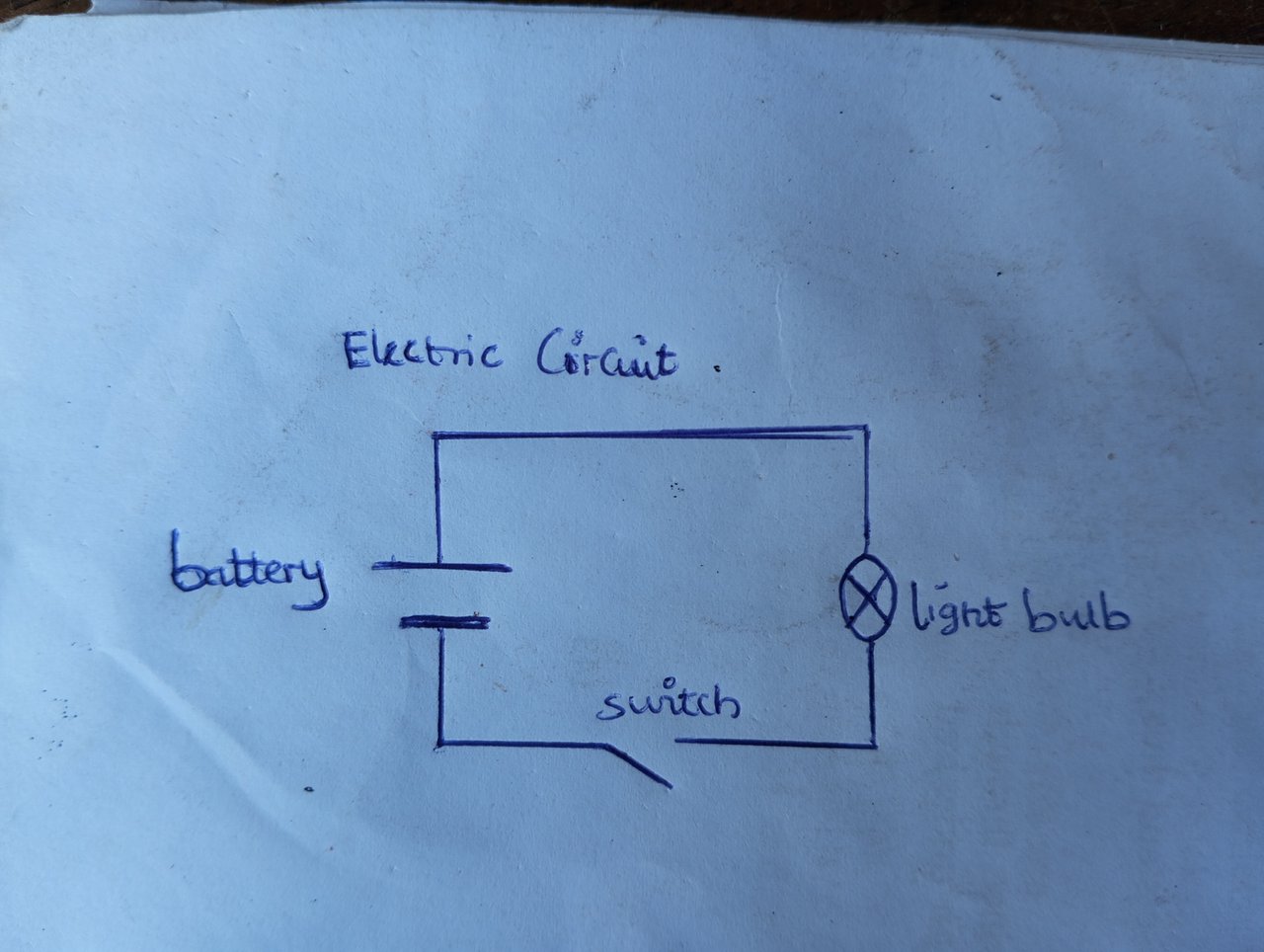
What is called an electrical circuit? Mention the importance of circuits in electrical engineering.
Electric circuits are paths through which an electric current passes. There are closed and open circuit, for a circuit to have an electric current means it should be a closed circuit whereby the current runs entirely in the circuit.
An electric circuit is on which has a source, this source can be a battery or a chemical which generates electricity, a conductor(wires) which transfers this current from the source to the bulb, a key is needed which acts like a switch, once this key in placed in the holder, the current flows making it a closed circuit, once this key is removed then electric current stops flowing which makes it an open circuit.
Circuits are the most important tools in electrical engineering. Electrical engineering deals with electric current, the source, its mode of transmission and the end point. With this terms you would know from the diagram that am electric circuit is one which has a source(battery), transmission cables, a key and a bulb( it can be any load). Circuits has vast roles in electrical engineering, as all the appliances works with a circuit.
Design and Development: With the introduction of circuits, engineers can test electrical devices and as well make makes designs on systems.
Efficiency: Circuits in engineering makes appliances work efficiently. Any faulty circuit would result in failures of that device. Whenever a device is faulty from the inside, electrical engineers rush to the circuits to find out what the problem is, and the fault can be gotten there.
core server: the circuit acts as a backbone to any electrical devices, without a circuit you can't have a functioning electrical system as every electrical system is created with an electric circuit.
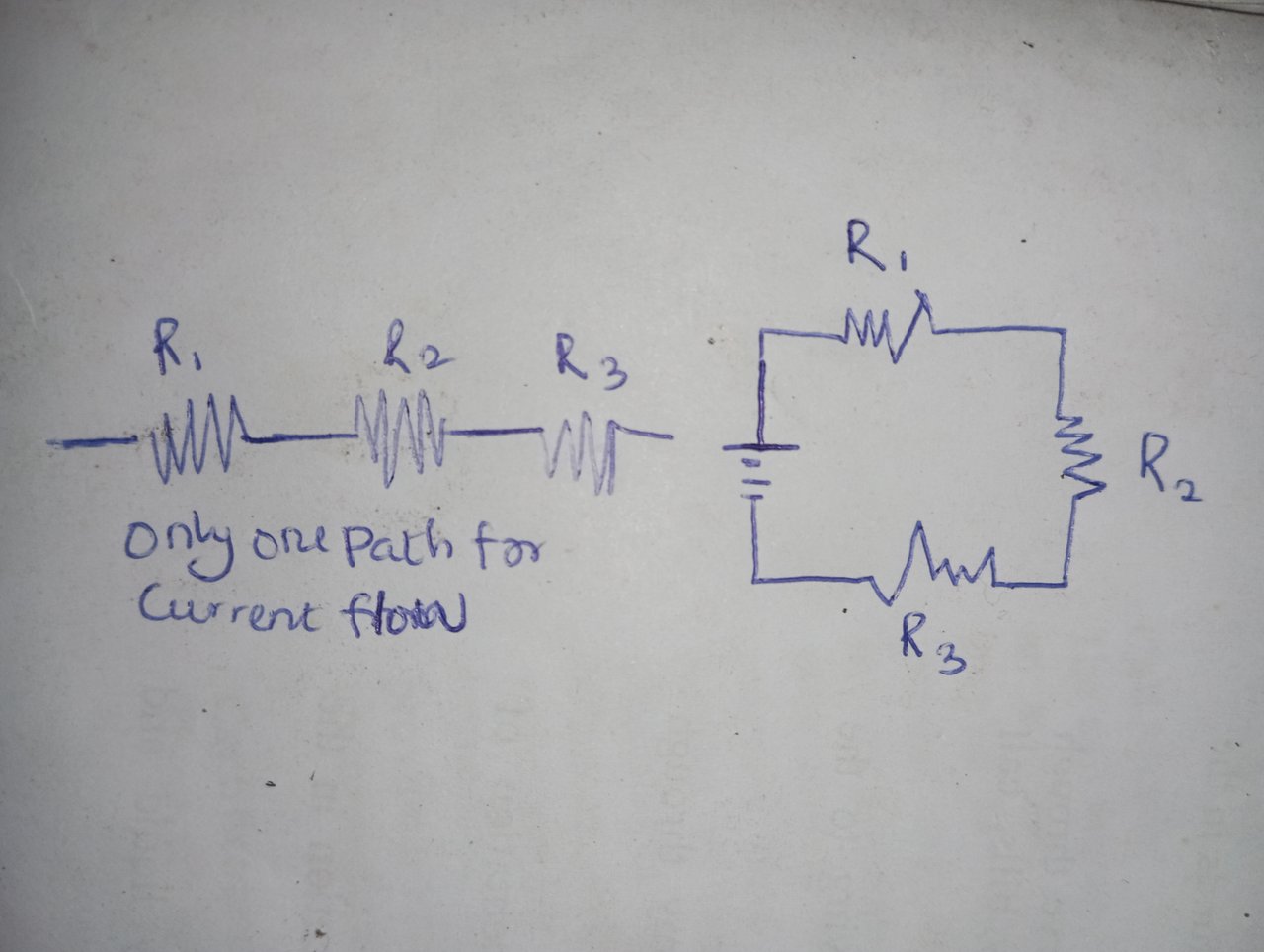 |
|---|
Series connections are connections in which all the components that are in the circuit are connected end to end, the current is the same and the voltage across the circuit is the sum of the individual voltage across the component
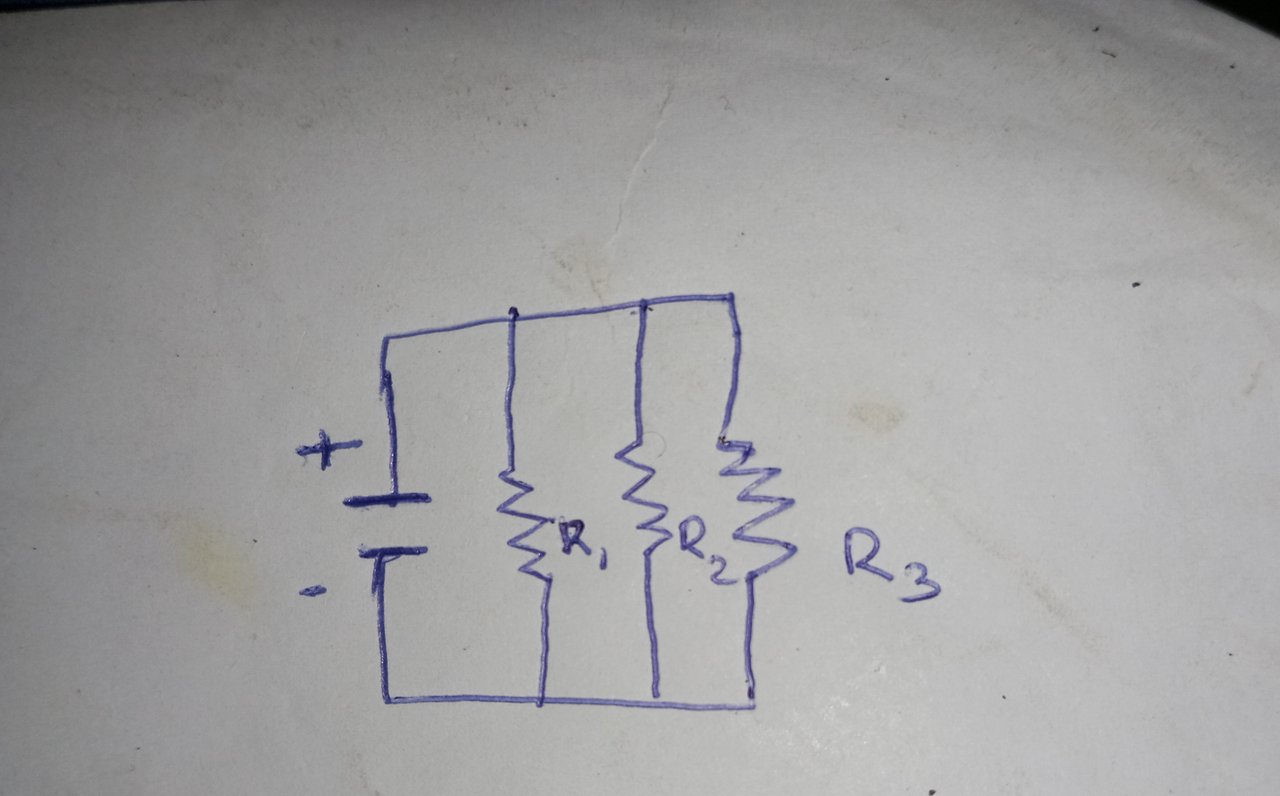 |
|---|
Parallel connection of electrical components is when they're connected across , this creates one part for the voltage to cross while the currents are diverted into many parts.
| Current | Parallel | Series |
|---|---|---|
| Current | The current splits to different section because it's connected across | The same amount of current flows through the components |
| Voltage | Every component has the same amount of voltage | The voltage are shared amongst the components |
| Cost | expensive and complex | simple |
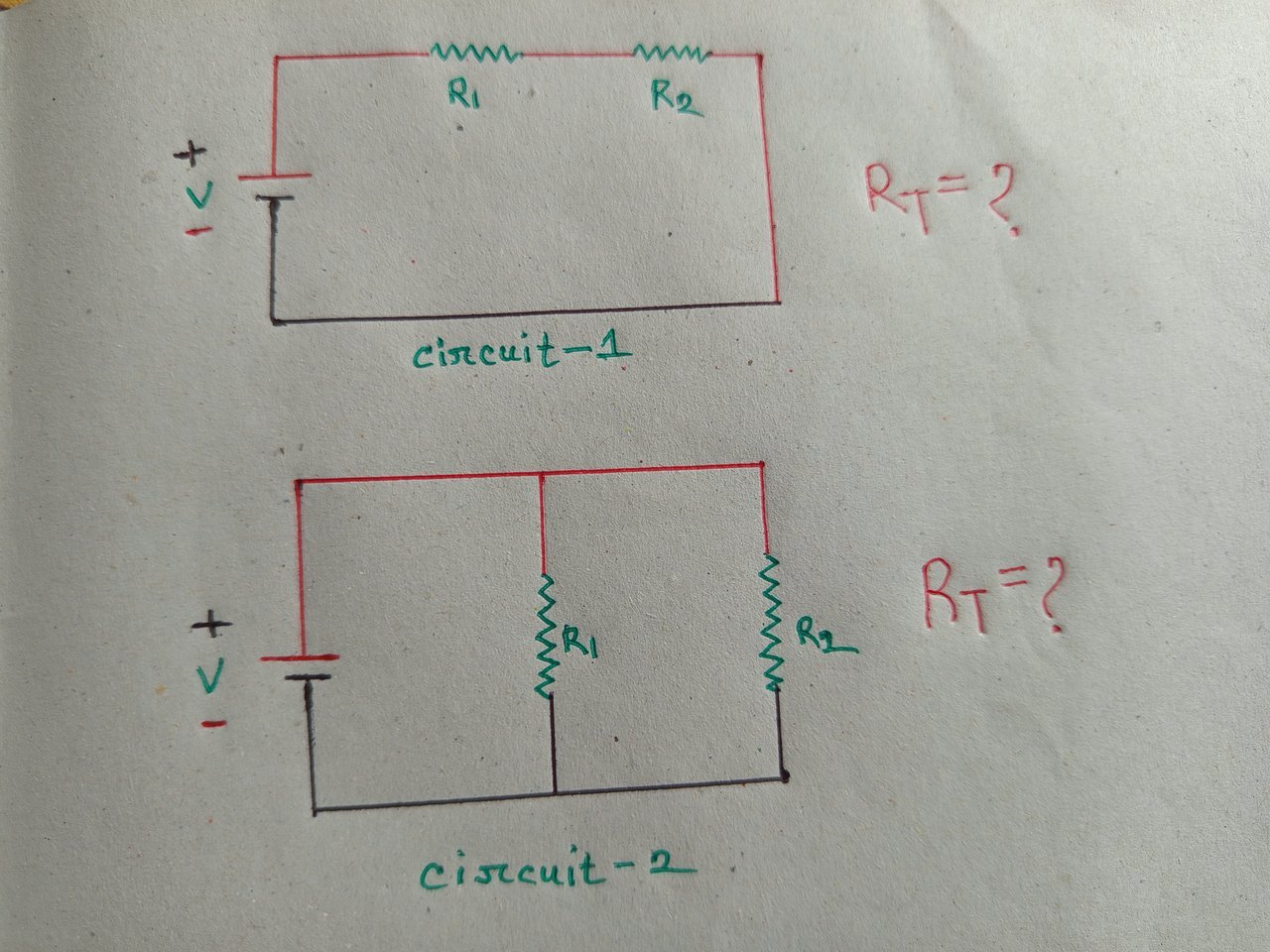
Note the above two circuits and mention their names, and calculate the total resistance of the two circuit. Assume any value of R1 and R2 but not the value specified in the course
- For the first diagram which is connected in series let's assume that the resistance
R1 = 2
R2 = 5
For series connections RT = R1 + R2
RT = 2+5
= 7
- For the second diagram which is a parallel connection
1/RT = 1/R1 + 1/R2
1/RT = 1/2 + 1/5
1/RT = 7/10
RT = 10/7
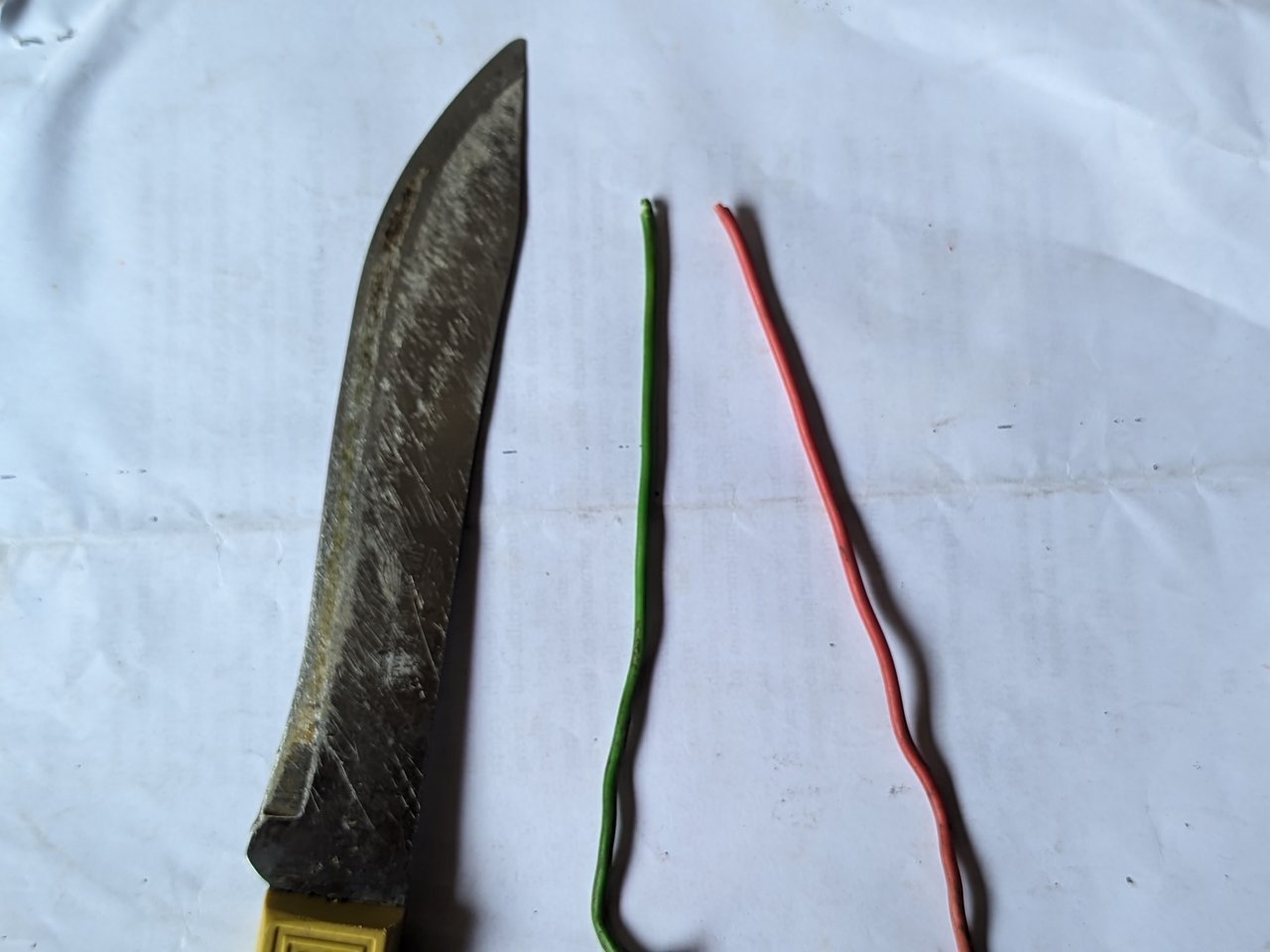 |
|---|
- I had my tools ready, a wire and a knife
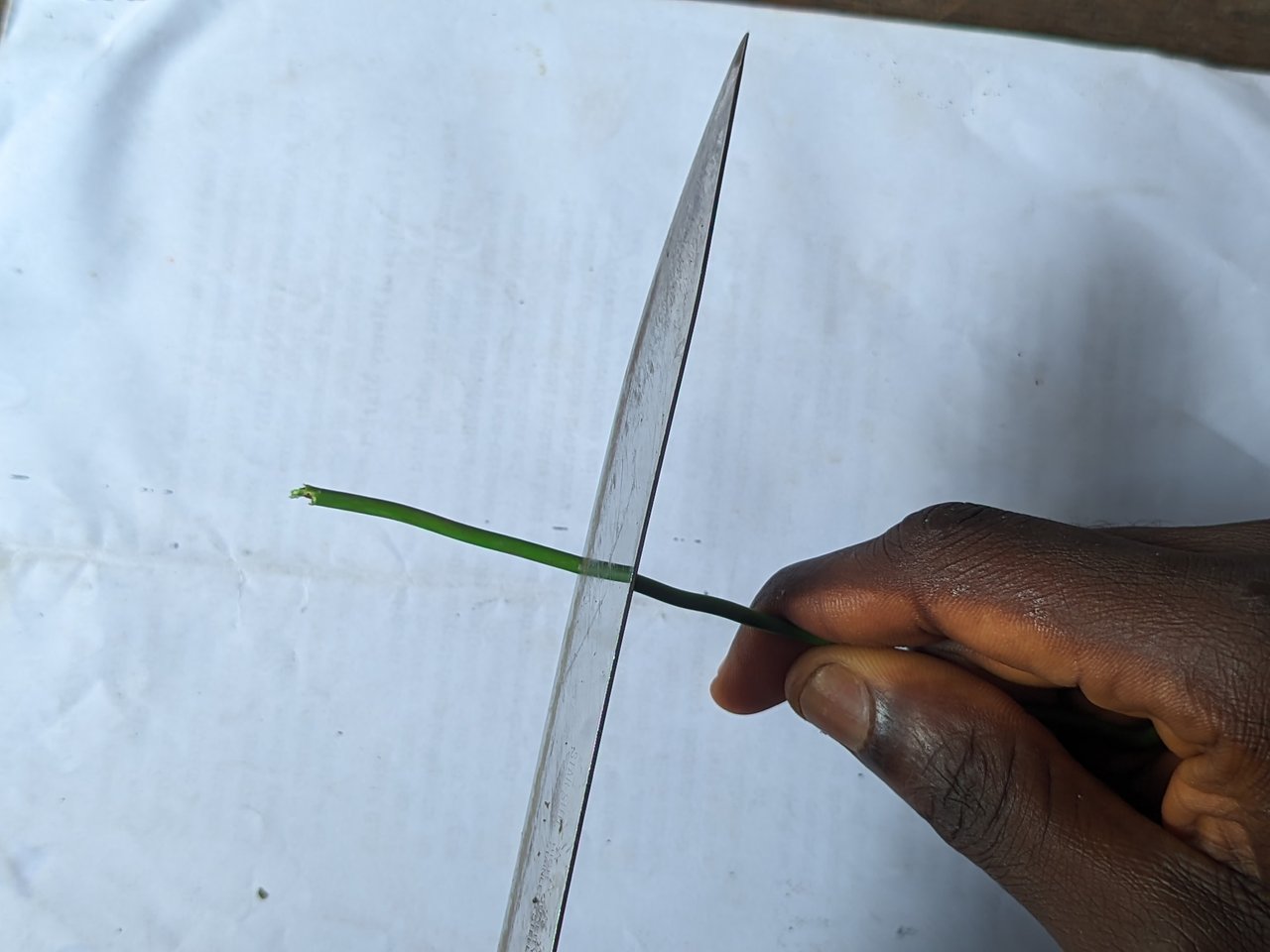 | 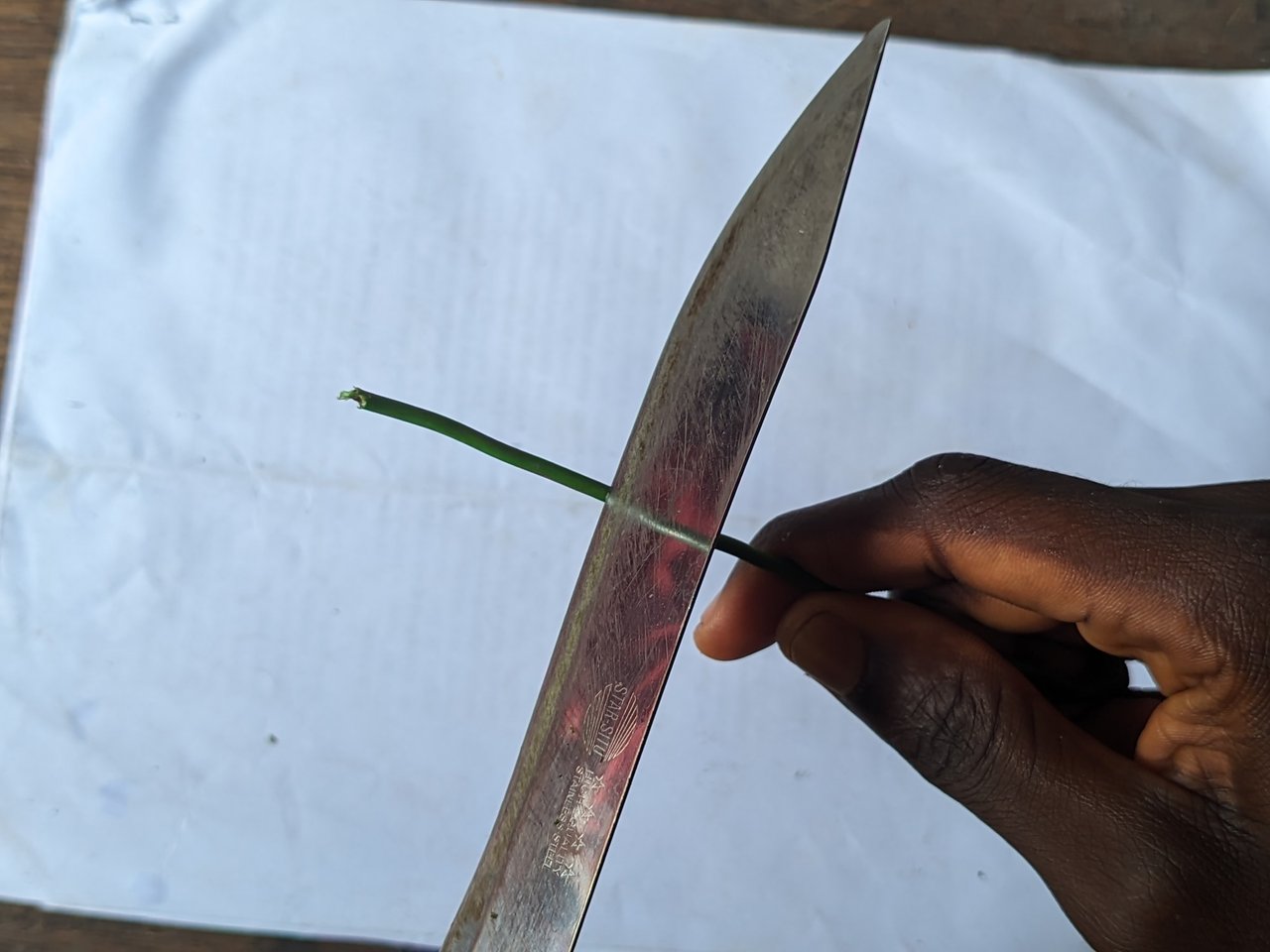 |
|---|
Placing my knife to cut at 30 to 60 degrees and cutting at one inch.
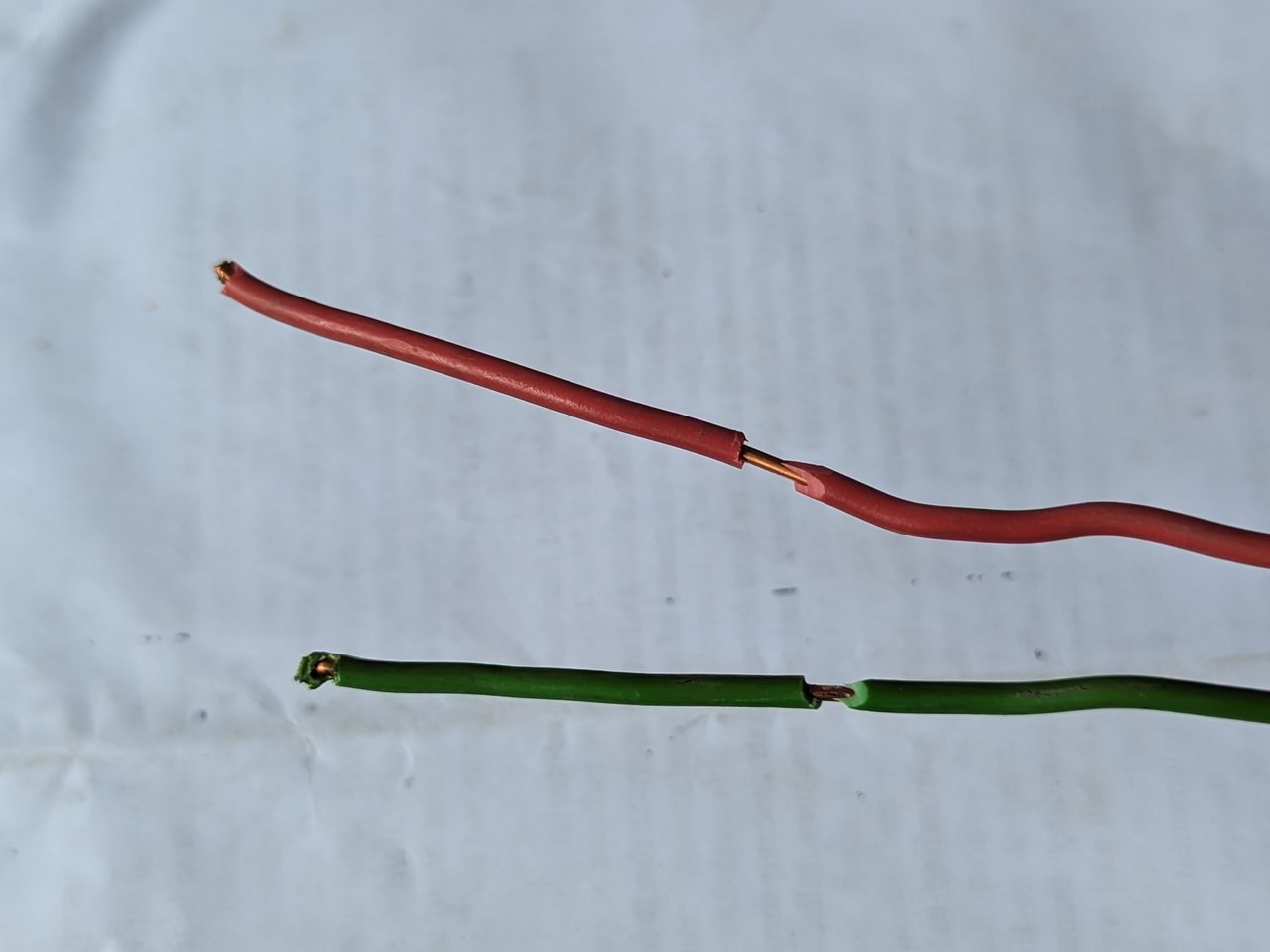 |  |
|---|
Taking off the insulation from my wire
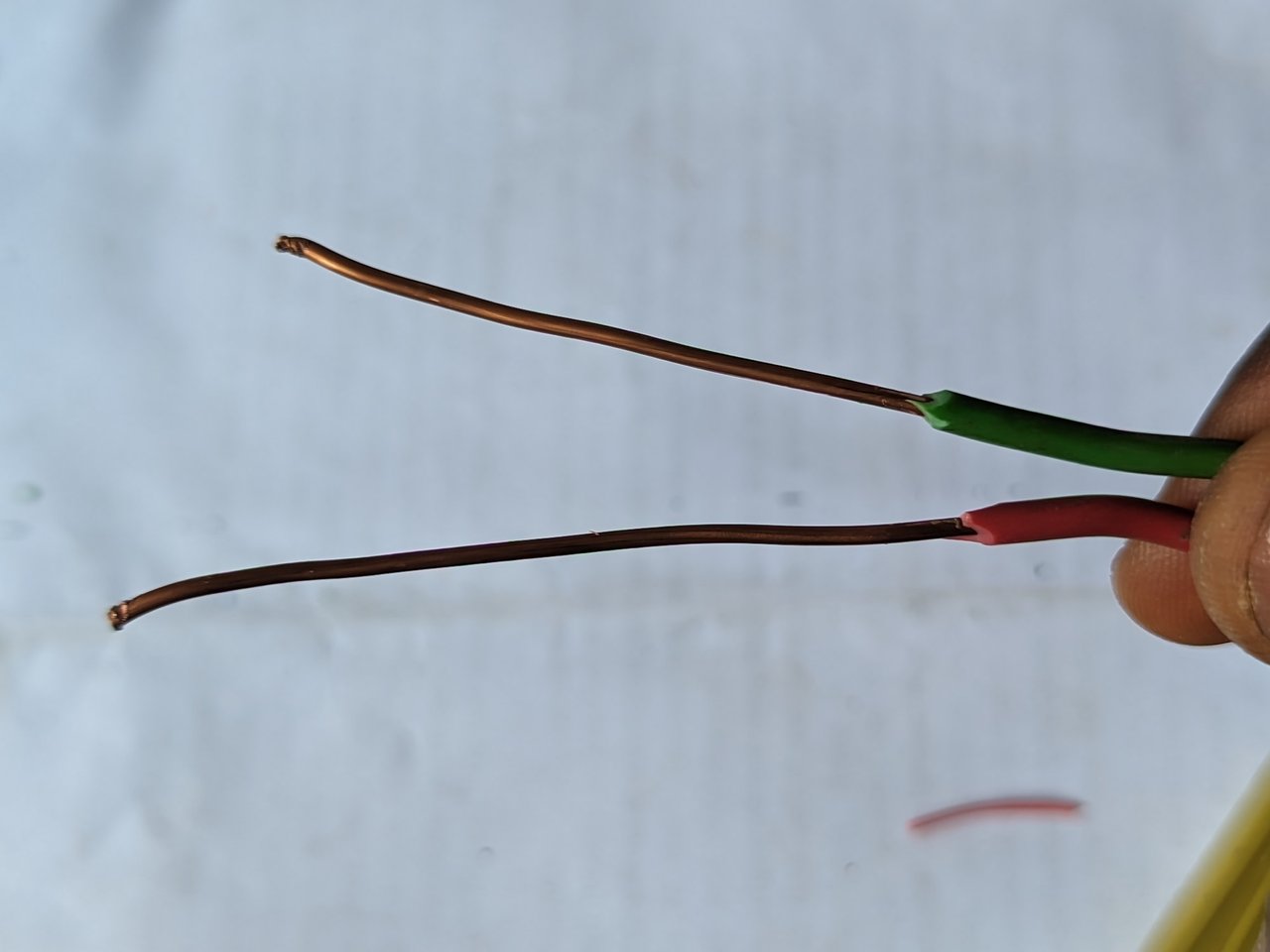 | 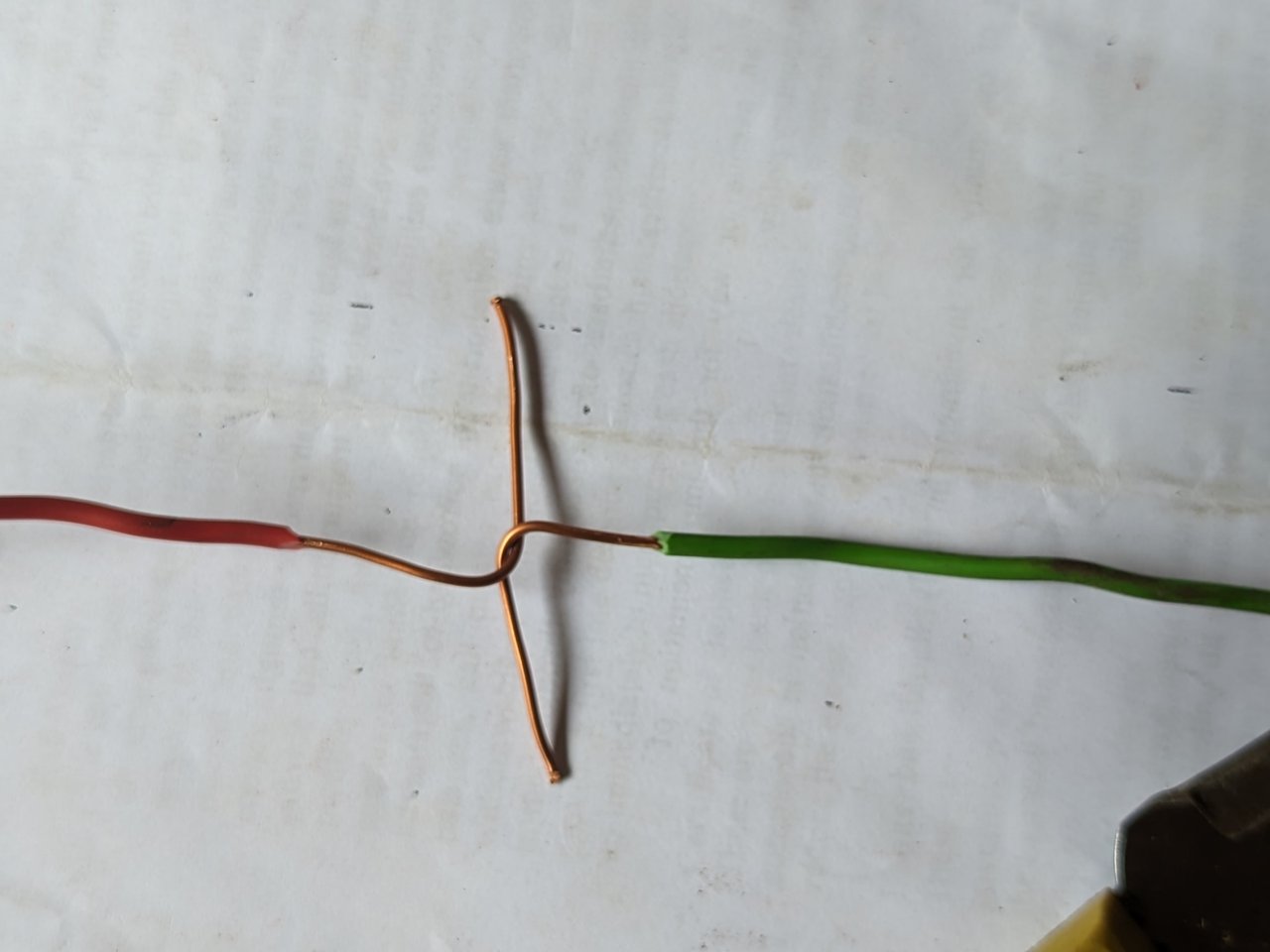 |
|---|
Making a bend, to make the wires face 90•
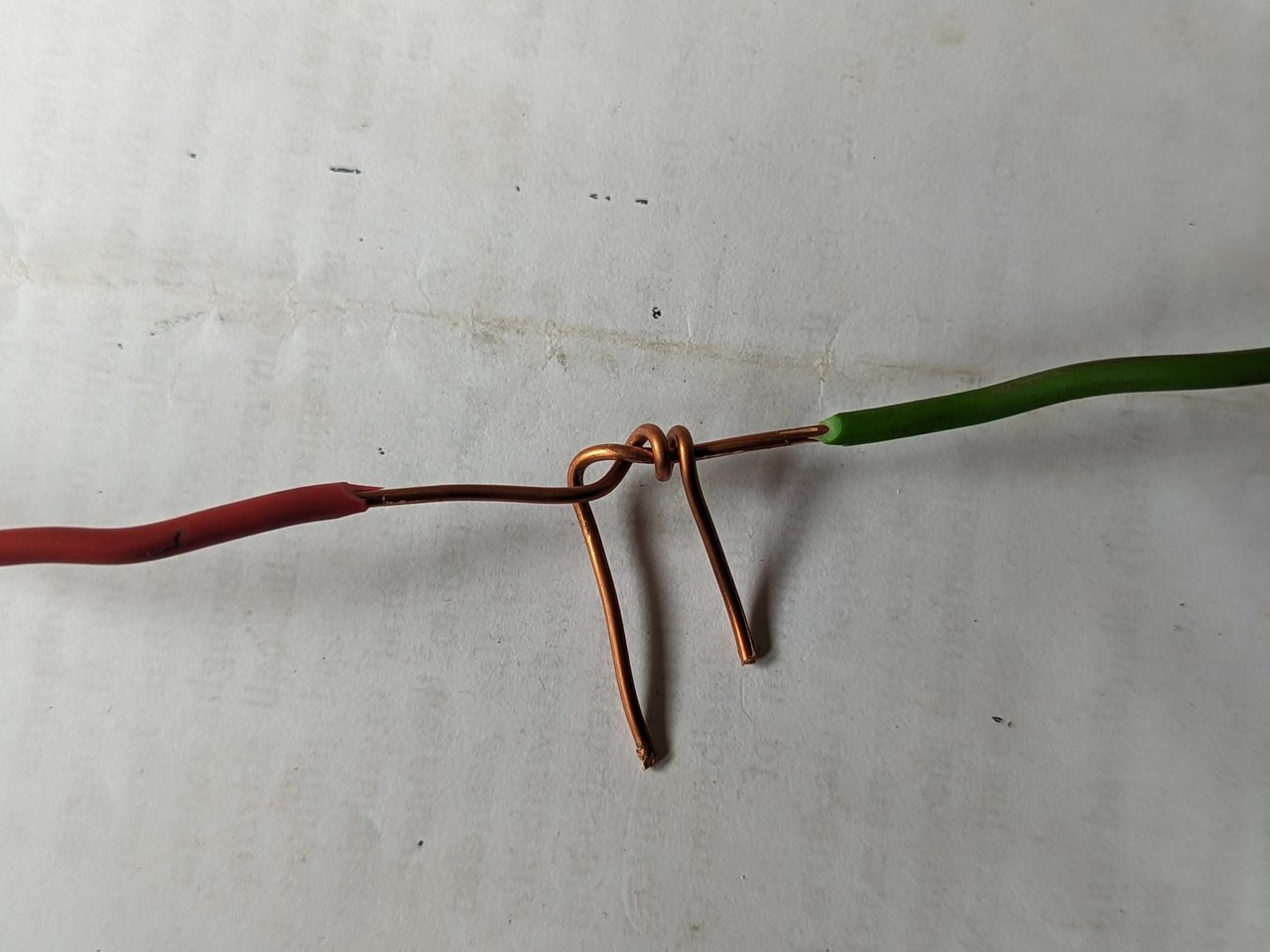 | 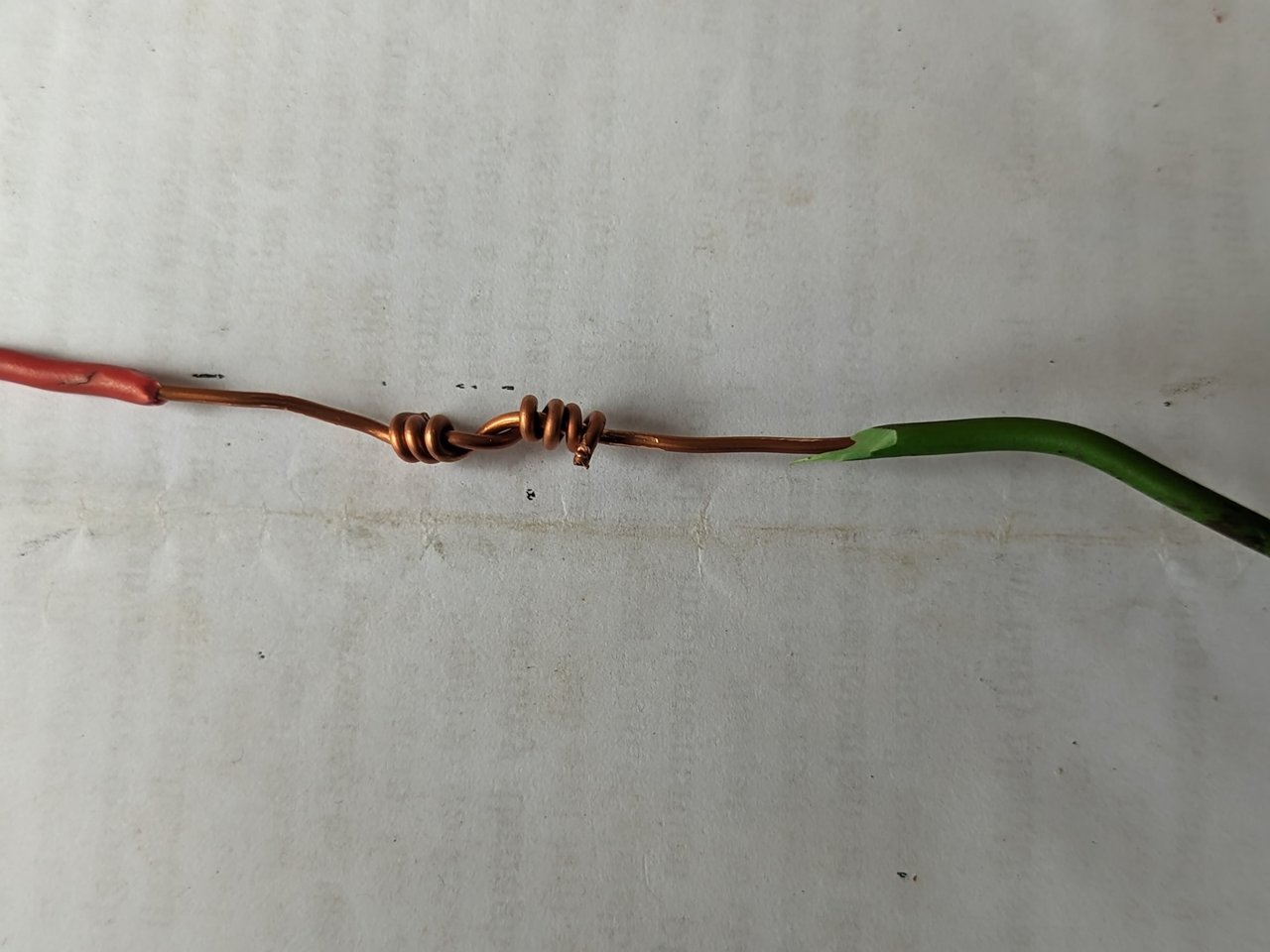 |
|---|
Twisting the copper wire to make it safe.
After completing this lesson write what you learn in your own words.
I have learnt a lot from this lesson, as it has taken my mind back to the electric circuit topic, it was a very interesting topic I liked in school and it was nice getting back to what I loved. Through the detailed lesson give to us by our teacher @solaymann I have been able to know more about the types of circuits and how well they function.
I have really learnt how to connect wires from that scratch, what I think is after we've made the twisting it should be insulated maybe with a rubber tape to make it safe.
Comments